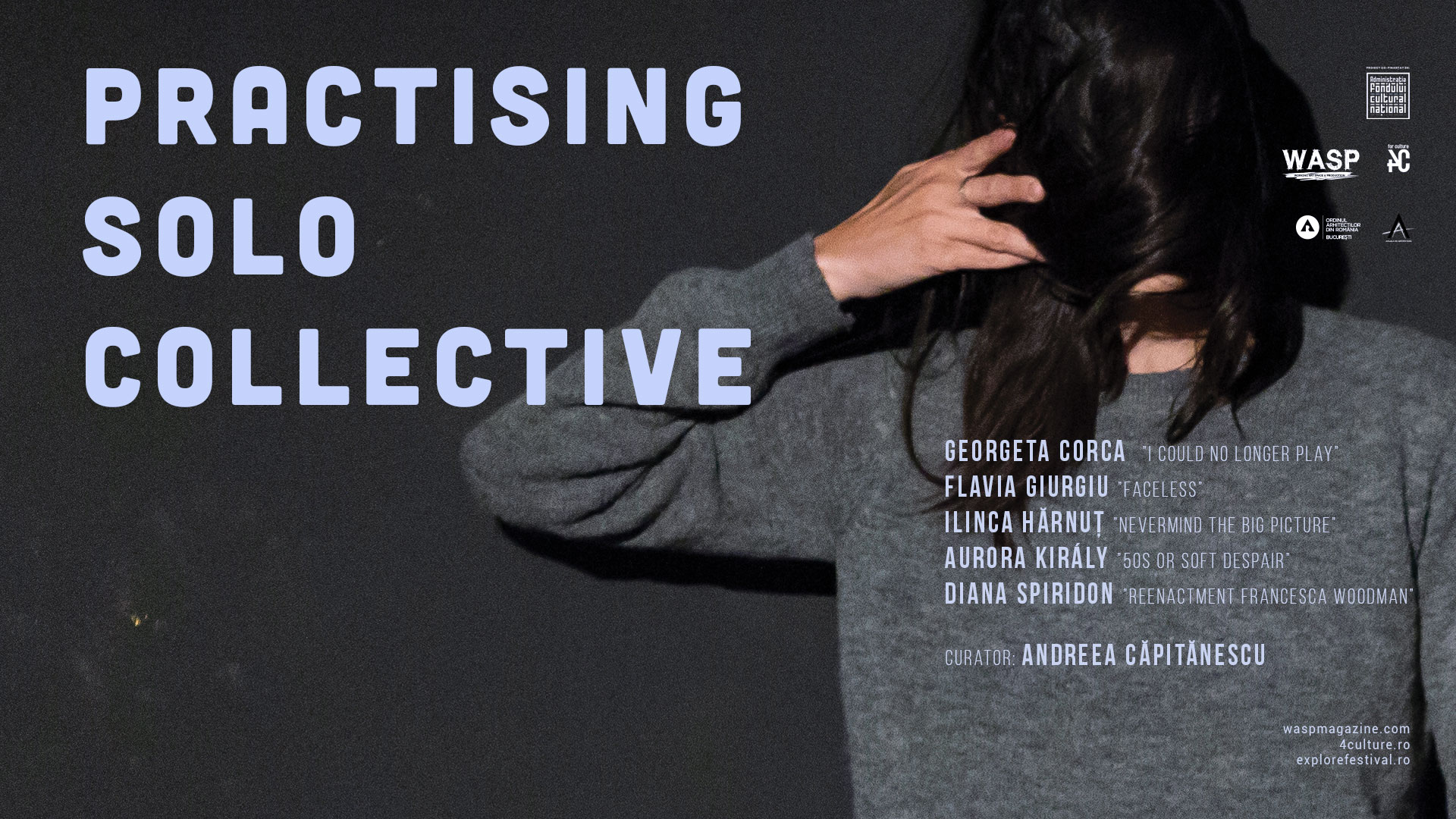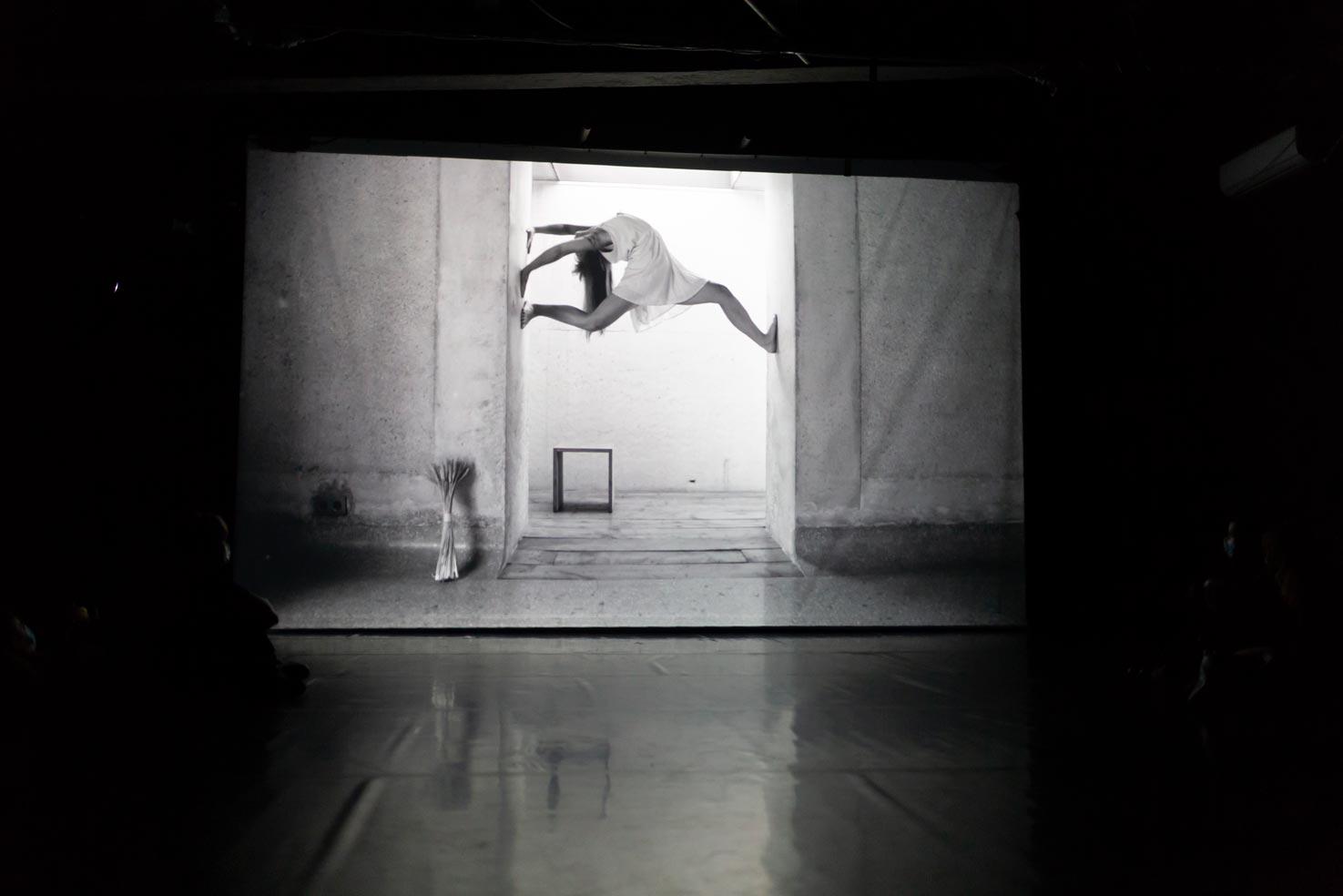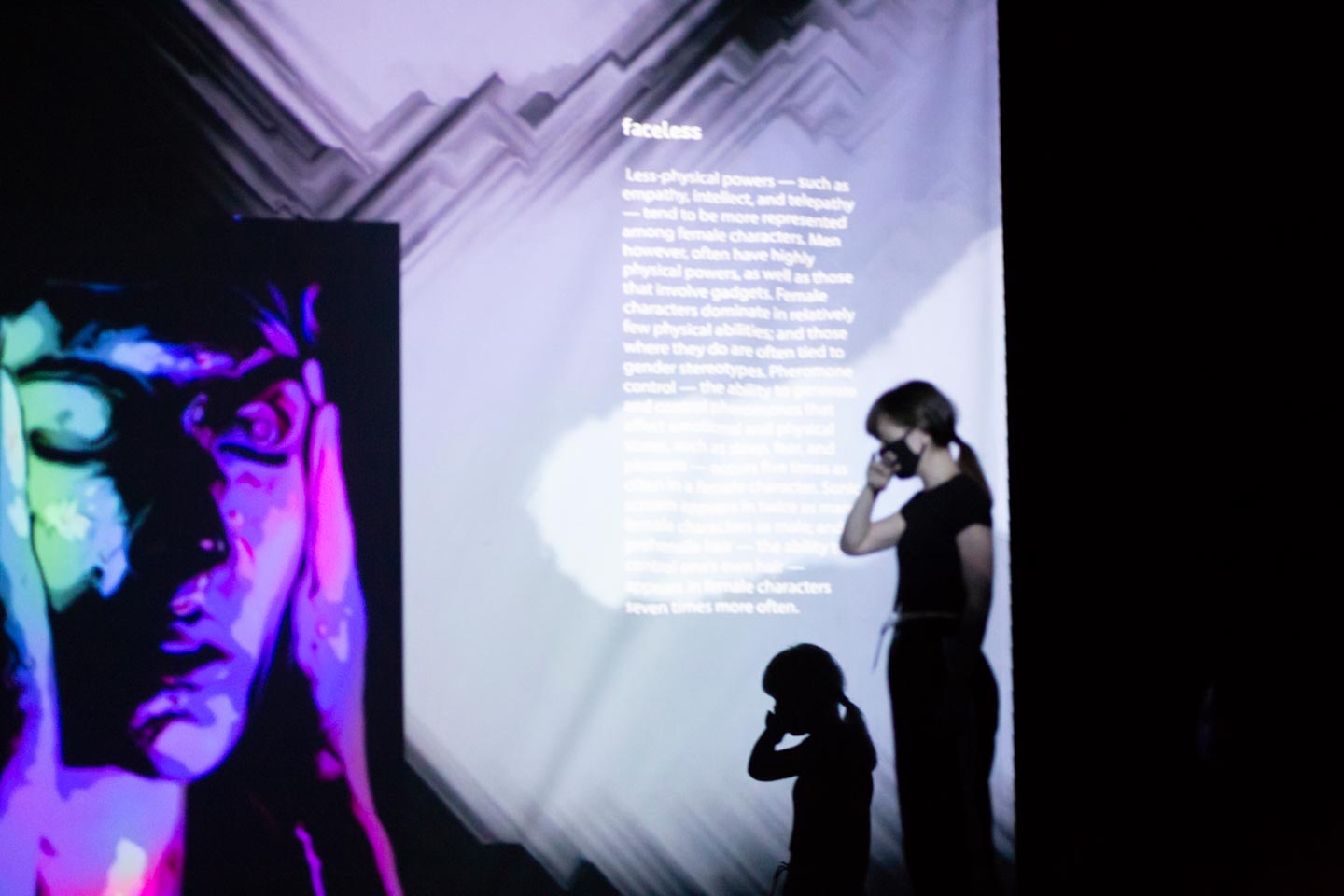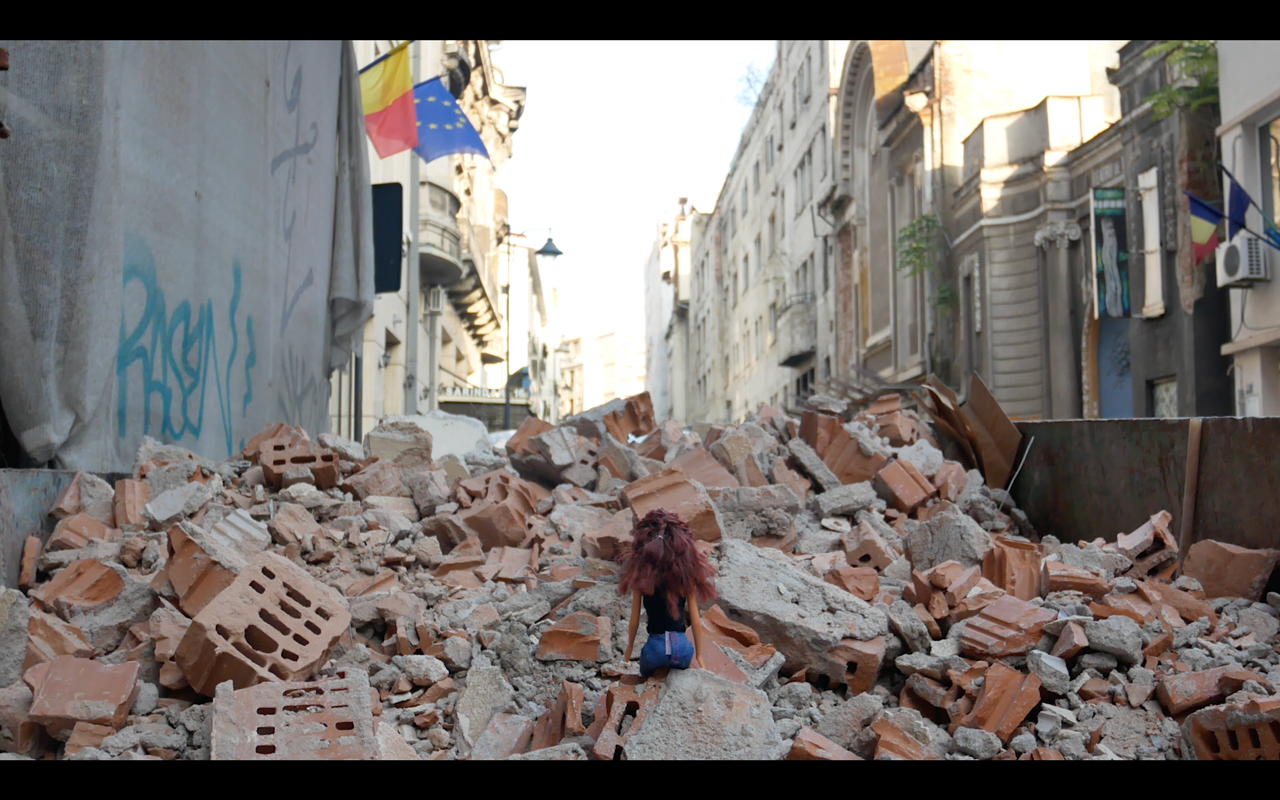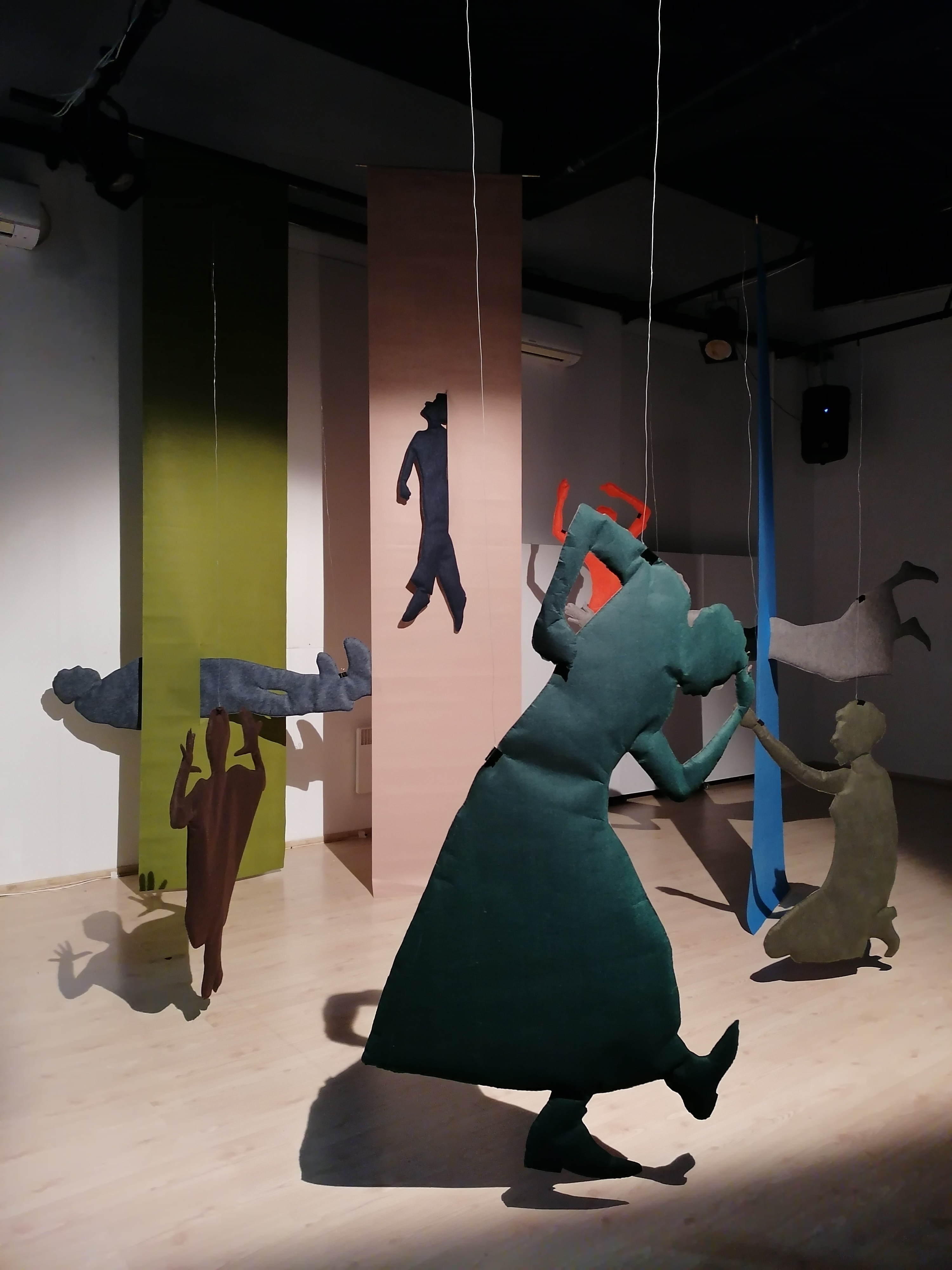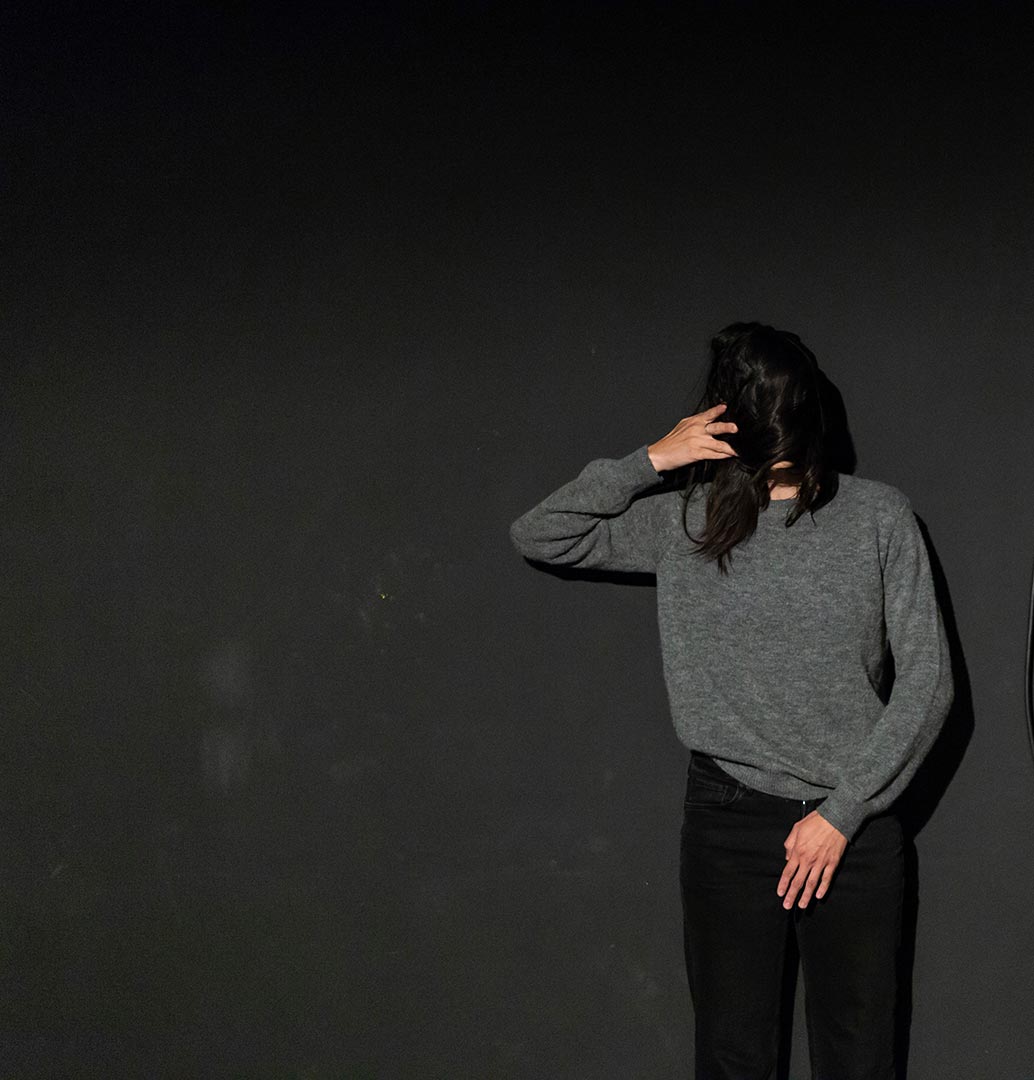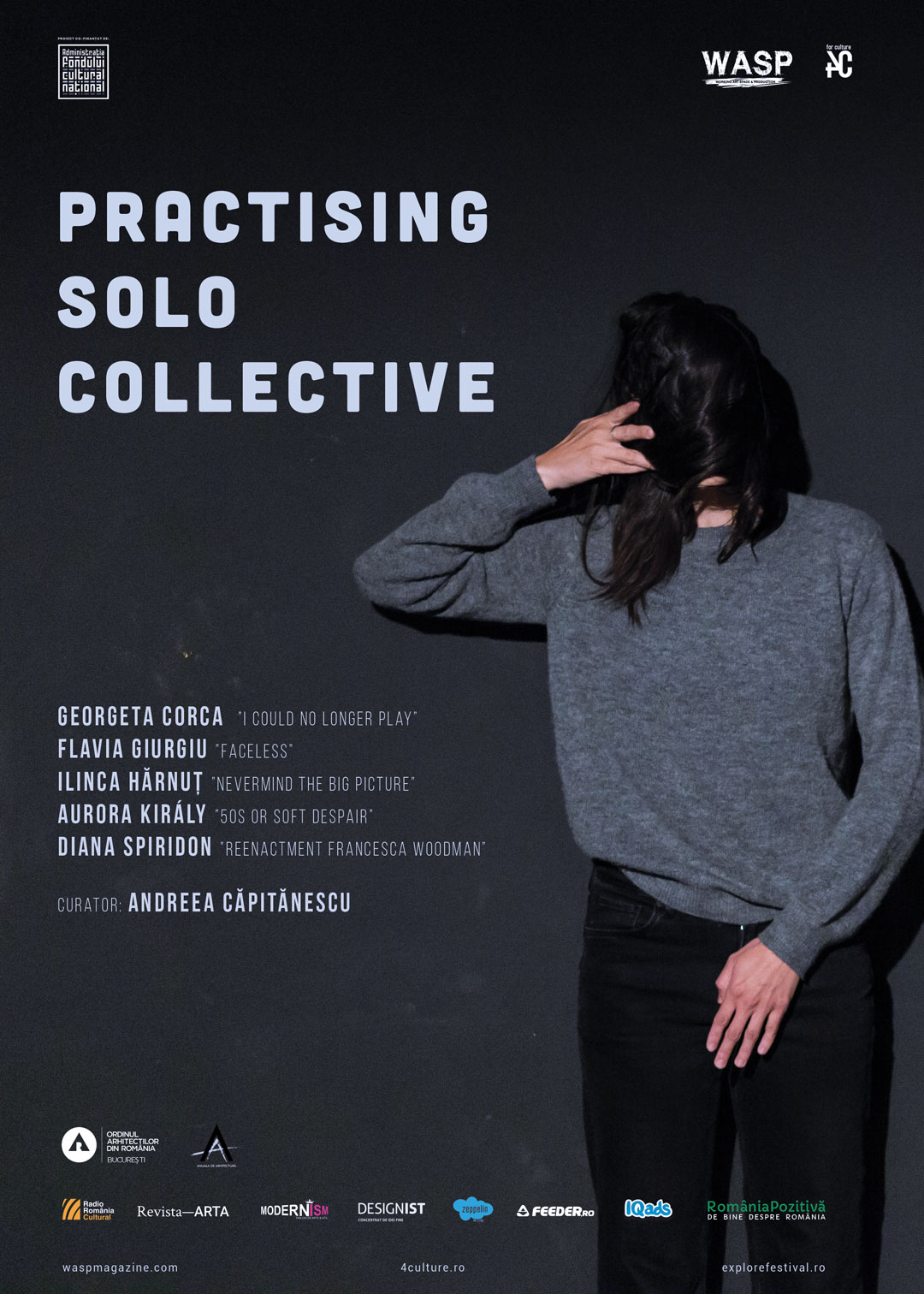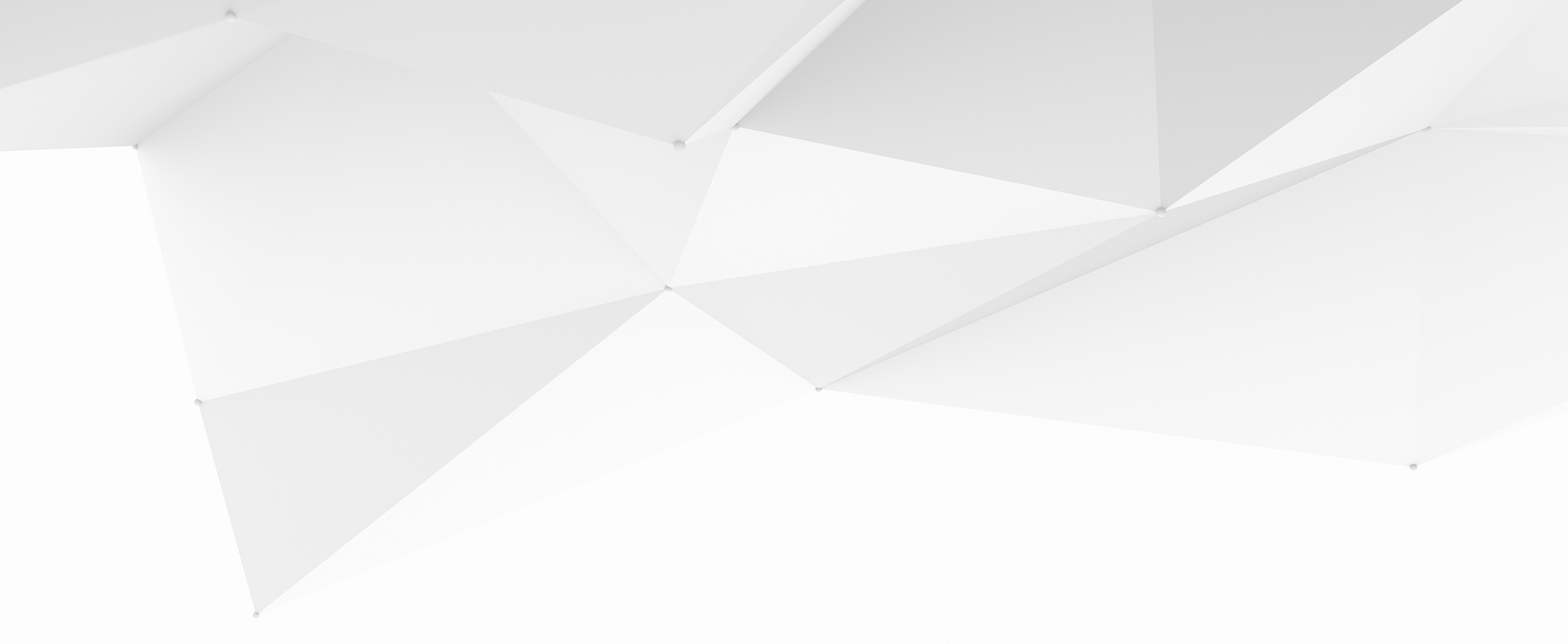București, 21 octombrie 2020
Practising solo collective
Instalații și video performance-uri, prezentate în premieră în cadrul eXplore festival, ediția 15
WASP Studios prezintă în luna octombrie rezultatele proiectului Practising solo collective, desfășurat în mediul online și la WASP Working Art Space and Production în perioada iulie-octombrie 2020, rezultate ce constau în noi creații solo realizate de Flavia Giurgiu, Geta Corca, Diana Spiridon, Ilinca Hărnuț, Aurora Király, curator Andreea Căpitănescu.
Practising solo collective reprezintă un demers de cercetare colectivă propus de curatoarea proiectului unui grup de artiste contemporane, care au acceptat să se expună și să exploreze în procesul creativ personal unor informații privind practici si abordări ce aparțin unor figuri feminine din domenii diferite decat cele pe care le folosesc in mod obisnuit in cercetarea lor curentă.
Găsindu-și inspirația în referințe – imagini și filme iconice din istoria artei, istoria dansului și performance-ului contemporan, proiectul „Practising solo collective” dezvoltă poeme în imagini, chestionează relația cu timpul, diferite niveluri ale realității și imaginii.
Printr-o deconstrucție cinematografică, proiectul supraexpune teme legate de identitate și experiment feminist, atât în spațiul domestic, cât și în natură. Referințele vizuale includ artiste reprezentative pentru istoria feminismului, oferind perspectiva istorică unei diversități și evoluții de expresie prin dans, performance, fotografie și video-art.
GEORGETA CORCA ‘I could no longer play’/ Performance video
Coregrafie și interpretare: Georgeta Corca
Imagine si montaj: Alexandru Mihai
Muzica: Andrei Raicu
I could no longer play este un video tribut Francesca Woodman, fotografă (3 aprilie 1958 – 19 ianuarie 1981). Cei ce mor tineri sunt mereu învăluiți de mister, lăsându-ne cu întrebări despre ceea ce ar fi devenit dacă ar fi trăit. Sinuciderea este un subiect tabu, ce atrage fascinația, mai ales când persoana este cunoscută și talentată. Francesca a murit la doar douăzeci și doi de ani, lăsând în urmă o moștenire excepțională. Filmul spune povestea Francescăi și a fost creat prin reinterpretarea unor fotografii ale artistei.
Georgeta Corca este absolventă a Liceului Pedagogic „Andrei Mureșanu” Brașov și licențiată a Facultății de Teatru din cadrul Universității de Artă Teatrală și Cinematografică “I.L. Caragiale”, secția Coregrafie. Formarea sa ca performer își are rădăcinile în gimnastica artistică si capoeira. De-a lungul timpului a acumulat experiență participând la numeroase workshopuri și a colaborat cu diverși coregrafi precum Thomas Stayert, Sergiu Matiș, Valentina de Piante Niculae, Simona Deaconescu, Inger Reidun Olsen și mulți alții. Este câștigătoarea ALT Concurs Național de Coregrafie 2014.
Filmul a fost prezentat la WASP Working Art Space and Production în cadrul eXplore festival #15, pe 17 octombrie 2020 și online pe paginile de facebook eXplore festival, WASP Studios și 4Culture.
FLAVIA GIURGIU ‘Faceless’ / Performance instalație
Am uitat fețele. Lumina face o dâră pe perete. Îmi amintesc forma. Mă uit acolo până când dâra se mărește și lumina se mărește și intru cu totul în spațiul ăla.
Și îmi amintesc.
Tot.
Tot ce am uitat.
Flavia Giurgiu a absolvit Liceul de Coregrafie și Artă Dramatică „Octavian Stroia” și Facultatea de Teatru și Televiziune a Universității Babeș-Bolyai din Cluj-Napoca. În practica sa artistică, Flavia caută să îmbine mișcarea scenică și dansul contemporan cu arta performativă, dar și cu spațiul teatral. În 2019 Flavia Giurgiu a fost invitată performer în cadrul noii producții MONUMENT 0.8: Manifestations, de Eszter Salamon – o producție Studio E.S / Elodie Perrin și WASP Studios, curatoriată de Andreea Căpitănescu, creație ce a fost prezentată în premieră la Kaaitheater, Bruxelles, în cadrul Europalia Arts Festival în ianuarie 2020.
Faceless a fost prezentat la WASP Working Art Space and Production în cadrul eXplore festival #15, pe 17 octombrie 2020 și online pe paginile de facebook eXplore festival, WASP Studios și 4Culture.
ILINCA HĂRNUȚ‚ Nevermind the Big Picture’ / Video instalație performativă
Instalația explorează raportul ambivalent al individului contemporan cu realitatea, alunecarea inertă pe suprafața concretului înspre vortexul hipnotic al hiperrealului. Având ca punct inițial de inspirație maniera în care Laurie Simmons folosește păpușile ca avataruri ale autoarei într-o lumea cvasi-utopică, instalația “Nevermind the Big Picture” folosește imobilitatea celor două femei de jucărie ca punte între realitatea opresivă și disfuncțională surprinsă în proiecția video și frenezia video ritmică a micului ecran. Cele două păpuși funcționează ca reprezentanți simbolici: figurine artificiale, optimizate, conforme așteptărilor sociale și a presiunii de a întruchipa lipsa de reacție și încremenirea întru frumos, materializând idealul de feminitate de care încă nu reușim să ne debarasăm.
Ilinca Hărnuț este actriță, scenaristă și artist multimedia. A absolvit UNATC I. L. Caragiale, secția actorie, și este în prezent doctorandă la UNARTE. Prin munca de cercetare artistică transectorială, încearcă să exploreze zonele de intersecție ale realității cu ficțiunea și felul în care să recompunem realitatea ca ficțiune și prin prisma ficțiunii.
Instalația Nevermind the Big Picture a fost prezentată publicului în premieră în cadrul eXplore festival #15, pe 17 și 18 octombrie, la WASP Working Art Space and Production și online pe paginile de facebook eXplore festival, WASP Studios și 4Culture. Instalația poate fi vizitată până pe 25 octombrie, cu programare prin email la contact@waspmagazine.com
AURORA KIRÁLY ‚50s sau Soft Despair’ / Instalație laborator
„50s sau Soft Despair” este o instalație despre pragul biologic și psihologic al vârstei de mijloc, despre momente de cumpănă și analiză, despre impulsuri venite din societate într-un timp în care se impun noi schimbări de percepție; dar și despre stări ‘mute’, despre dorințe nerecunoscute sau neacceptate, despre remodelarea identității la diferite vârste.
Instalația folosește o serie de siluete feminine în posturi selectate din zona dansului (urmărind artiste care au forțat bariere creative – din punct de vedere conceptual sau prin modul în care au folosit mișcarea și corpul, dar și artiste uitate, a căror contribuție este sub/reevaluată), mizând pe o teatralitate sculpturală: siluetele ilustrează deopotrivă corpuri și mișcări idealizate sau romantice și corpuri care vorbesc despre puterea și hotărârea feminină sau despre stări conflictuale, etc. Siluetele intersectează aceste planuri verticale, un balans între elemente abstracte cu rol scenografic/de fundal și aceste prezențe figurative – ‘solo’-uri corporale. Toate elementele sunt realizate din fetru, un material care are și moliciune și fermitate.
Artiste citate: Mary Wigman, Meredith Monk, Lucinda Childs, Yvonne Rainer, Marie Chouinard, Mette Ingvartsen, Mette Edvardsen.
Aurora Király abordează domeniul artei contemporane din diverse perspective, ca artist, curator, manager cultural. Din 2007, predă în cadrul Departamentului Fotografie și Imagine Dinamică al Universității Naționale de Arte din București. Lucrările sale actuale pun în discuție sursele la care apelează artistul contemporan în alegerea temelor și modul în care se raportează la contextul / istoria recentă / istoria artei. Influența tendințelor internaționale și a pieței de artă asupra producției artistice, creația și practicile artiștilor care își „ascultă” și asumă o „voce” proprie sunt câteva dintre problematicile care o preocupă în prezent.
Instalația „50s sau Soft Despair” a fost prezentată publicului în premieră în cadrul eXplore festival #15, pe 17 și 18 octombrie, la WASP Working Art Space and Production, și online pe paginile de facebook eXplore festival, WASP Studios și 4Culture. Instalația poate fi vizitată până pe 25 octombrie, cu programare prin email la contact@waspmagazine.com
DIANA SPIRIDON ‚Reenactment Francesca Woodman’ / Performance
Ideea solo-ului a pornit de la publicația scriitoarei Charlotte Perkins Gilman, ‘The yellow wallpaper’, din 1892. Lucrarea, simbol al curentului feminist american, are ca personaj principal o femeie care suferă de o boala psihică, în urma căreia devine obsedată de tapetul camerei în care locuiește. O atmosferă asemănătoare am regăsit în fotografiile artistei Francesca Woodman. Solo-ul este un reenactment al unor lucrări selectate ale artistei, unele dintre ele devenind stilizate în mișcare. Împreună cu câteva pasaje înregistrate din nuvelă, acestea vor constitui fundalul sonor al performance-ului, formând o legătura între cele două artiste.
Diana Spiridon a absolvit în 2007 Liceul de Coregrafie “Floria Capsali” din București, iar în perioada 2007-2009 a studiat în cadrul programului ’Bachelor of dance’ la Academia de dans din Rotterdam, CODARTS – Universitatea de Arte. În 2013 a făcut parte din proiectul “An immaterial retrospective of the Venice Biennale” creat de Alexandra Pirici și Manuel Pelmuș, prezentat în cadrul Bienalei de Artă Contemporană de la Veneția.
Performance-ul ‚Reenactment Francesca Woodman’ a fost prezentat publicului în premieră în cadrul eXplore festival #15, pe 17 octombrie, la WASP Working Art Space and Production, și online pe paginile de facebook eXplore festival, WASP Studios și 4Culture.
PRACTISING SOLO COLLECTIVE
Producție: WASP Studios
Co-producător: Asociația 4Culture
Proiect cultural co-finanțat de Administrația Fondului Cultural Național
Parteneri: Ordinul Arhitecților din România – filiala București, Anuala de Arhitectură București 2020
Proiectul nu reprezintă în mod necesar poziția Administrației Fondului Cultural Național. Administrația Fondului Cultural Național nu este responsabilă de conținutul proiectului sau de modul în care rezultatele proiectului pot fi folosite. Acestea sunt în întregime responsabilitatea beneficiarului finanțării.
Parteneri media: Radio România Cultural, Modernism, Zeppelin, Revista ARTA, Designist, feeder.ro, IQads, România Pozitivă
